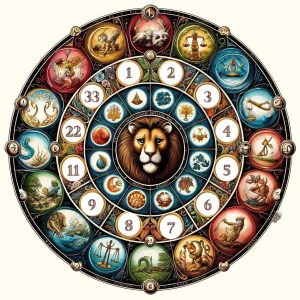Introduction: The Evolution of Major World Religions
Across the vast timeline of human history, spirituality and religion have played foundational roles in shaping societies, cultures, and individual identities. From primitive forms of worship centered around natural phenomena to intricate theological systems and practices, the evolution of world religions offers a fascinating journey through the complexities of human belief and its impact on civilizations. Journey with us as we delve into the evolution of some of the world’s major religions.
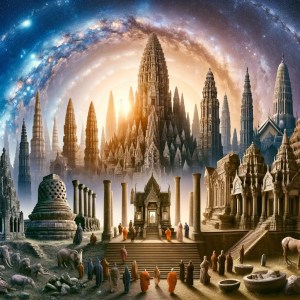
Hinduism:
The Ancient Continuum of Hinduism
Hinduism, with its profound historical roots and intricate tapestry of beliefs, stands as a testament to humanity’s enduring quest for spiritual understanding. Often hailed as one of the world’s oldest organized religions, its origins in the Indian subcontinent trace back over 4,000 years, weaving a rich tapestry of tales, doctrines, and rituals.
The Vedic Foundations
Central to the early evolution of Hinduism was the Vedic tradition, characterized by a set of sacred hymns and rituals documented in the Vedas. These ancient scriptures, composed in Sanskrit, lay down hymns, incantations, and rituals that were practiced by the early Indo-Aryans. The Rigveda, the oldest among them, is a collection of poetic hymns dedicated to various deities representing natural forces.
Evolution and Diversification
Over the subsequent centuries, Hinduism underwent significant transformations. The Upanishads introduced the concepts of Atman (individual soul) and Brahman (universal consciousness), laying philosophical foundations that would deeply influence Hindu thought. This was followed by the rise of the epic narratives like the Mahabharata and Ramayana, which not only entertained but also imparted moral lessons, offering guidance on dharma (righteous duty).
Additionally, new schools of thought and religious movements arose, each interpreting the scriptures in their unique ways. This led to the establishment of various sects, such as Shaivism (worshippers of Shiva), Vaishnavism (devotees of Vishnu), and Shaktism (worshippers of the Goddess or Devi).
A Pantheon of Deities and Philosophies
One of Hinduism’s most distinctive features is its vast array of gods and goddesses, each symbolizing different aspects of the divine and human experience. From the destroyer, Shiva, and the preserver, Vishnu, to the goddess of knowledge, Saraswati, and the god of auspicious beginnings, Ganesha, each deity has a unique set of stories, rituals, and festivals associated with them.
Equally vast are Hinduism’s philosophical systems, from the dualism of Dvaita to the non-dualism of Advaita Vedanta, which explores the relationship between the self and the universe.
Distinct Yet Unified
While Hinduism may appear bewilderingly diverse, at its core, it emphasizes the interconnectedness of all life and the cyclical nature of existence. The concepts of karma (action and its consequences), samsara (cycle of birth, death, and rebirth), and moksha (liberation from the cycle) are central tenets that guide the spiritual pursuits of Hindus.
In essence, Hinduism, with its multifaceted nature, offers a myriad of paths for spiritual exploration, each leading to the same universal truths. It remains an evolving faith, continuously integrating new ideas while maintaining reverence for ancient wisdom.

Buddhism:
Enlightenment and Compassion: The Buddhist Journey
Buddhism stands as one of the world’s major religions, characterized by its profound teachings on suffering, compassion, and the path to enlightenment. Rooted in the teachings of Siddhartha Gautama, commonly known as the Buddha, it has captivated and transformed millions of lives, leaving a significant impact on various cultures across Asia and beyond.
Siddhartha Gautama: The Awakened One
Born into luxury in the 6th century BCE, Siddhartha Gautama’s journey from a prince shielded from life’s harsh realities to the enlightened Buddha is an inspiring tale of self-discovery. After encountering the undeniable realities of old age, sickness, death, and asceticism, Siddhartha renounced his princely life to search for the truth of existence. His quest culminated under the Bodhi tree in Bodh Gaya, India, where he attained enlightenment, unraveling the mysteries of suffering and the path to its cessation.
The Four Noble Truths and the Eightfold Path
At the heart of Buddhism are the Four Noble Truths, which diagnose the human condition and prescribe a remedy:
- The truth of suffering (Dukkha) – Life is inherently unsatisfactory and filled with suffering.
- The origin of suffering (Samudaya) – Suffering arises from attachment, desire, and ignorance.
- The cessation of suffering (Nirodha) – It’s possible to end this suffering.
- The path to the cessation of suffering (Magga) – The Eightfold Path is the guide to end suffering.
The Eightfold Path is a set of ethical and mental practices, leading one towards enlightenment and liberation. These encompass right view, right intention, right speech, right action, right livelihood, right effort, right mindfulness, and right concentration.
The Blossoming of Buddhist Schools
While the core teachings of the Buddha remained consistent, interpretations and practices evolved as Buddhism journeyed across diverse landscapes.
- Theravada, predominant in Sri Lanka and Southeast Asia, is seen as the most orthodox school, placing emphasis on individual enlightenment through meditation and monastic discipline.
- Mahayana, spread across East Asia, underscores compassion and introduces the concept of the Bodhisattva, enlightened beings who delay their own nirvana to assist others on the path.
- Vajrayana, or Tantric Buddhism, primarily found in Tibet and Mongolia, incorporates rituals, mantras, and meditation techniques, aiming for rapid enlightenment.
Buddhism’s Timeless Appeal
The appeal of Buddhism lies in its profound understanding of the human psyche, its emphasis on compassion, and its inclusive nature, allowing for various interpretations and practices. As it spread, Buddhism not only adapted to different cultures but also enriched them, leading to a harmonious blend of beliefs, art, and traditions. Today, its teachings resonate with many around the world, offering solace and guidance in an ever-changing world.

Judaism:
Covenant and Commandments: The Pillars of Judaism
Judaism, one of the world’s oldest monotheistic religions, is deeply rooted in a rich tapestry of history, spirituality, and covenantal relationships. With its origins in the ancient Near East, Judaism has carved an indelible mark on human civilization, influencing many aspects of culture, law, and theology.
Abraham: The Father of Monotheism
It all began with Abraham, a seminal figure not just in Judaism but also in Christianity and Islam. According to Jewish tradition, God chose Abraham to establish a new covenant, marking the birth of monotheism. This covenant, an everlasting bond between God and the descendants of Abraham, laid the foundational belief in one, all-powerful deity. Abraham’s faith in this singular God, even when tested, made him a paragon of unwavering faith and obedience.
The Torah: Guidebook of Life
Central to Jewish life and belief is the Torah, revered as the direct word of God. Comprising the first five books of the Hebrew Bible, the Torah is more than just a religious text; it’s a guide to living a righteous life. Through narratives, laws, and commandments, it instructs on matters of morality, justice, and spirituality. The Ten Commandments, in particular, form the moral and ethical cornerstone, guiding not just Jewish life but influencing legal systems worldwide.
Diasporas and Diversification
Throughout history, the Jewish community faced significant challenges, from the Babylonian exile to the Roman destruction of Jerusalem’s Second Temple. These diasporas, or scatterings, led to the Jewish people establishing communities in various parts of the world. This global dispersion gave birth to diverse traditions within Judaism:
- Ashkenazi Judaism: Originating from the Jewish communities of Central and Eastern Europe, Ashkenazi Judaism developed unique liturgical, legal, and cultural traditions. Yiddish, a High German-derived language, became a prominent language among Ashkenazi Jews.
- Sephardic Judaism: With roots in the Iberian Peninsula, Sephardic Jews have their distinct liturgical and cultural practices. After the expulsion from Spain in 1492, they settled in North Africa, the Ottoman Empire, and other parts of Europe, carrying with them the Ladino language and their rich traditions.
- Mizrahi Judaism: Representing Jews from the Middle East, North Africa, and parts of Asia, Mizrahi traditions are influenced by their interactions with neighboring Arab cultures and communities.
Judaism’s Legacy and Continuity
Despite facing adversity and challenges over the millennia, Judaism’s strength lies in its adaptability and commitment to core beliefs. Its traditions, rituals, and teachings have remained alive through generations, and its values continue to inspire not just the Jewish community but humanity at large. The legacy of Judaism is evident in its lasting contributions to theology, ethics, and human rights, acting as a beacon of hope and perseverance.
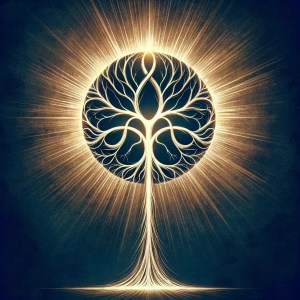
Christianity:
From a Carpenter to Global Faith: The Meteoric Rise of Christianity
The story of Christianity is a testament to how humble beginnings can transform into global movements. From the pastoral lands of the Middle East to the corridors of Roman power and beyond, Christianity’s journey is one of faith, perseverance, and evolution.
Jesus of Nazareth: The Cornerstone
In the bustling landscapes of ancient Judea, Jesus of Nazareth emerged not just as a carpenter but as a charismatic teacher, healer, and proclaimer of the Kingdom of God. While his ministry lasted only a few years, his teachings touched the hearts of many. Through parables and sermons, Jesus introduced radical ideas of love, forgiveness, and a personal relationship with God. But it was his crucifixion, believed by Christians to be a sacrifice for humanity’s sins, followed by his resurrection, that became the defining moment for the nascent faith.
Spreading the Word: Apostles and Early Converts
The rapid dissemination of Christianity can be largely attributed to its early proponents, especially the apostles. Key figures like Peter, regarded as the first pope by Catholics, and Paul, whose letters form a significant portion of the New Testament, traveled extensively, spreading the teachings of Jesus. Their missionary journeys took the message of Christ from small Jewish communities to the broader Greco-Roman world.
The Power of Rome and the Birth of Christendom
Initially, Christians faced persecution from Roman authorities. However, a turning point arrived with Emperor Constantine’s conversion in the early 4th century CE. His endorsement transformed Christianity from a marginalized sect to the favored religion of the empire. This imperial patronage ushered in the era of Christendom, where the church and state became intricately linked.
Schisms and the Branching Paths of Belief
As Christianity spread, it also diversified. Varied interpretations of scriptures, teachings, and practices led to significant theological debates. Two major schisms shaped the course of Christianity:
- The Great Schism (1054 CE): This rift between the Eastern and Western churches led to the formation of the Eastern Orthodox Church, headquartered in Constantinople, and the Roman Catholic Church in Rome.
- The Protestant Reformation (16th century): Initiated by figures like Martin Luther, this movement challenged the doctrines and practices of the Catholic Church, leading to the emergence of various Protestant denominations.
A Legacy of Faith and Transformation
Today, Christianity stands as the world’s largest religion, with diverse denominations coexisting and often collaborating on shared goals. Its evolution from the teachings of a carpenter in a small Middle Eastern town to a global faith is a reflection of its universal message and its ability to adapt and resonate across different cultures and epochs. Whether through majestic cathedrals, grassroots community services, or missionary endeavors, the impact of Christianity is profoundly interwoven into the fabric of human history.

Islam:
Submission to the One: The Unfolding Tale of Islam
In the vast desert expanses of the Arabian Peninsula, amid the caravans and trade routes, a new spiritual dawn emerged in the 7th century CE that would eventually span continents. This was the birth of Islam, a monotheistic faith that reveres the Prophet Muhammad as the last in a long line of prophets, including Abraham, Moses, and Jesus.
The Divine Message: Revelations and The Quran
Muhammad, born in Mecca, began receiving divine revelations at the age of 40 from the angel Gabriel. These revelations, which continued for 23 years, are meticulously preserved in the Quran, Islam’s holy book. The Quran, regarded by Muslims as the literal word of God, offers guidance on all aspects of life, from moral conduct to rituals.
The Five Pillars: The Foundations of Faith
Islam, at its heart, is defined by the Five Pillars, fundamental practices that shape the life of every devout Muslim:
- Shahada (Faith): The declaration of belief that there is no god but God (Allah in Arabic), and Muhammad is His messenger.
- Salat (Prayer): The performance of the five daily prayers, facing the Kaaba in Mecca.
- Zakat (Almsgiving): The obligation to give to the needy a portion of one’s wealth.
- Sawm (Fasting): Observing a fast from dawn to sunset during the holy month of Ramadan.
- Hajj (Pilgrimage): The once-in-a-lifetime obligation for those who are physically and financially able, to make a pilgrimage to the holy city of Mecca.
Expansion and Evolution
Following the death of the Prophet Muhammad, Islam experienced a rapid expansion. From the Arabian Peninsula, it spread to North Africa, Spain, Persia, and even the Indian subcontinent, carried forth both by conquests and peaceful trades. As it spread, it encountered diverse cultures, and this interaction led to a rich tapestry of Islamic art, science, and philosophy.
Sectarian Developments: Sunni and Shia
While the core beliefs remained consistent, differences in the interpretation of teachings and disagreements about leadership succession after the Prophet’s death led to the formation of two primary sects: Sunni and Shia. The Sunnis, the majority, believe in the elected caliphate as the rightful leaders, starting with Abu Bakr, the Prophet’s close companion. In contrast, Shias maintain that leadership should have passed directly to Ali, the Prophet’s cousin and son-in-law, and subsequently to his descendants. Over time, these divisions deepened, leading to distinct religious practices, legal systems, and traditions within each sect.
Sufism: The Mystical Dimension
Amidst these sects, Sufism, or Islamic mysticism, emerged as a spiritual movement focused on the inward search for God and striving to achieve spiritual closeness. Through poetry, music, and dance, Sufis express their profound spiritual experiences and longing for divine love.
Modern-Day Islam
Today, Islam is the second-largest religion globally, with over a billion followers spanning continents, cultures, and languages. Despite differences in practices and beliefs among various communities, the core essence of submission to the one God, as taught by Prophet Muhammad, remains the unifying force for Muslims everywhere.
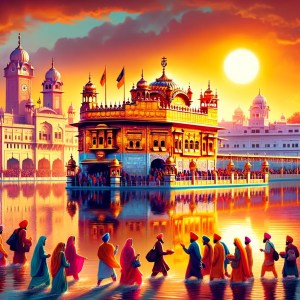
Sikhism:
A Religion Born in Diversity
Sikhism emerged during a time when the Indian subcontinent was a melting pot of religious ideas, primarily dominated by Hinduism and Islam. This unique confluence deeply influenced Guru Nanak, the founder of Sikhism, who sought to offer a path that was distinct yet drew upon the spiritual richness of his surroundings.
The Ten Gurus and Their Legacy
Sikhism’s evolution can be traced through the teachings and contributions of its ten successive Gurus. Each Guru added depth and dimension to the faith, from establishing communities (like Amritsar’s Golden Temple) to solidifying the practices and beliefs. The tenth Guru, Guru Gobind Singh, before his demise, declared the Guru Granth Sahib as the final and eternal Guru, ensuring the scripture’s centrality in guiding Sikhs.
Five Ks: The Sikh Identity
One of the unique aspects of Sikhism is the Five Ks (or ‘Panj Kakaar’), which are five articles of faith that baptized Sikhs are expected to wear, symbolizing their commitment to the principles of their faith. These are:
- Kesh (uncut hair): A symbol of spirituality and acceptance of God’s will.
- Kara (a steel bracelet): Denoting the eternity of God.
- Kanga (a wooden comb): Representing cleanliness and order.
- Kachera (cotton undergarments): Symbolizing self-control and chastity.
- Kirpan (a ceremonial sword): A mark of bravery and a commitment to justice and protection of the weak.
Community and Service: The Pillars of Sikhism
Central to Sikhism is the concept of seva or selfless service. This is evident in the practice of langar, a community kitchen found in Sikh Gurudwaras (places of worship) where everyone, irrespective of caste, creed, or religion, is served free meals. It signifies equality, community, and the Sikh principle of sharing.
Modern-Day Sikhism
Today, Sikhism has spread beyond the Indian subcontinent, with significant communities in the UK, Canada, the US, and Australia. Despite the challenges they’ve faced, including cases of mistaken identity and hate crimes, Sikhs remain committed to their faith’s core tenets. The essence of Sikhism – emphasizing the oneness of God, the equality of all beings, and the importance of service – continues to resonate and inspire millions globally.
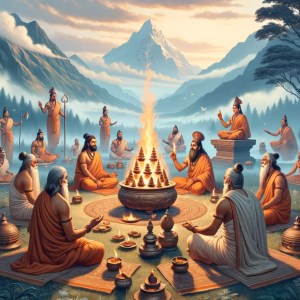
Conclusion:
The Intersection of Faiths
The fabric of human history is intricately interwoven with threads of spiritual exploration. These major world religions, having evolved over millennia, serve as beacons that have guided countless souls through the complexities of existence. Each has its unique narrative, yet when we examine them collectively, we notice profound intersections. The paths may be different, but the quest is often strikingly similar.
A Dialogue Across Time and Space
These religions, while evolving in different corners of the world, have often communicated with one another, sometimes in silent whispers and other times in loud exchanges. Through conquests, migrations, and trade, ideas were shared, debated, and amalgamated. This dynamic interaction has often led to periods of enlightenment, where philosophical advancements shaped societies and cultures.
The Universal Human Experience
At their core, these faiths grapple with the fundamental questions of human existence: Who are we? Why are we here? What is our purpose? They speak to our shared joys, sorrows, aspirations, and fears. The narratives, rituals, and teachings are an expression of the collective human psyche, aiming to make sense of the mysteries of life and the cosmos.
Religion in a Globalized World
Today, as the world becomes increasingly interconnected, the teachings of these religions hold even more significance. They remind us of the shared values that unite us, transcending boundaries, cultures, and languages. In an age marked by rapid technological advancements and societal changes, these ancient teachings can offer solace, perspective, and a moral compass.
Looking Ahead with Hope
In conclusion, the evolution of major world religions is not just a tale of the past, but a living narrative that continues to shape our present and future. By understanding and appreciating the depth and diversity of these faiths, we can foster an environment of mutual respect and collaboration. As we stand on the precipice of a new era, it is the perennial wisdom of love, compassion, justice, and transcendence from these faiths that can steer humanity towards a brighter, more harmonious tomorrow.
🔭 Join the Simply Sound Society Forum: A Community of Explorers and Dreamers! 🔭

- 🌠 Embark on a Cosmic Odyssey with SimplySoundAdvice.com: Where Wonders Never Cease! 🌠
- Self-Discovery: Exploring Various Spiritual Practices
- The Most Credible UFO Sightings in History: Top 4
- Extraterrestrial Life: What Leading Scientists Believe
- Exploring the Science Behind Ghost Sightings
- The Mind-Bending World of Quantum Physics
- How Artificial Intelligence (AI) is Reshaping Our World
- The Cosmic Tug-of-War: When Science and Religion Attend the Same Dinner-Party
- The World’s Most Haunted Places: A Global Tour










